Wood vs Vinyl Windows
Wood Windows
$10,500 - $12,000
(10 48-inch sash windows installed)
VS
Vinyl Windows
$7,700 - $9,800
(10 48-inch sash windows installed)
Cost varies greatly by region (and even by zip code).
To get free estimates from local contractors, please indicate yours.
Wood Windows
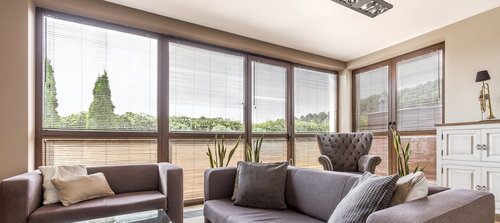
- Traditional appearance
- Can be painted or stained any color
- Many options to choose from
- Durable and long-lasting
- Improves resale value of home
- Energy-efficient
- High-maintenance
- Burns in a fire
- Can splinter or rot over time
- More expensive
- Harder to install
- Will not enhance security of the home
(10 48-inch sash windows installed)
Get free advice and estimates from window installers in your city.
Vinyl Windows
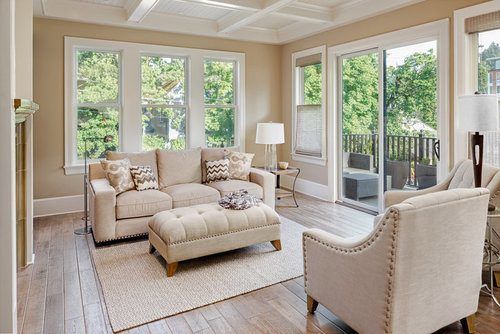
- Low-maintenance
- Less expensive
- Will not burn in a fire, splinter, or rot
- Easier to install
- Energy-efficient
- Improves resale value of home
- Will melt in high temperatures
- Can warp with expansion
- Will not enhance security of the home
- Fewer options
- Plastic appearance
- May not be as durable or long-lasting
(10 48-inch sash windows installed)
Get free advice and estimates from window installers in your city.
Replacing the windows in your home can keep energy costs down while making this important feature more attractive and functional. Windows that stick, rattle, let in air when shut, or are warped can detract from your home’s value, making it less comfortable to live in.
Replacement windows come in many different styles, materials, and glass types, with two of the more popular materials being wood and vinyl 1 for the frame. Both wood and vinyl 1 windows have positive attributes, but they look and function very differently. We outline these differences below so that you can make a more informed decision about which will be better in your home.
Appearance
When it comes to appearance, wood windows have the most options and a more classic, traditional look. Wood windows are most commonly installed in historic homes where the appearance of the window matters most. They come in many different wood species, with pine being one of the least expensive and most common. However, it is possible to find wood windows in a range of species, including cedar for durability and mahogany for looks and style. The more exotic the wood, the more durable it is likely to be, but the higher the cost.
Wood windows can be painted any color or stained to show off the natural wood grain. It is also common for wood windows to have an aluminum or vinyl cladding on the exterior to keep maintenance low, while the interior has the authentic wood grain showing.
Vinyl windows have fewer options available when it comes to appearance. This is largely because the more ridges and faux wood grain the vinyl has, the more grime it tends to collect over time. For this reason, most vinyl windows are smooth in finish, which gives them a plastic appearance.
Vinyl windows mostly come in white but may be special ordered in a few other colors as well. They have fewer options for customization but come in a range of sizes and thicknesses of frame, which can influence how they look and how well they function over time.
Insulation and Energy-Efficiency
Both wood and vinyl windows can be energy-efficient. According to Energy Star, both are considered insulating. The key with vinyl is that it can be hollow or filled with foam, which can increase its insulating properties. Checking each window for the Energy Star label ensures that it is energy-efficient regardless of frame material.
In both cases, however, the efficiency of the material may change over time. Wood that is not well-maintained may splinter or rot, which can create air gaps for heat and cold to pass through.
Vinyl expands and contracts much more than other materials, including wood and glass. Over time, this expansion and contraction may warp the frame, which in turn could also cause an air gap to occur, lowering the efficiency. While wood windows can be repaired, vinyl cannot. The only way to fix this issue is to replace the windows.
Installation
The installation of vinyl windows is considered slightly easier and faster than the installation of wood windows. Vinyl windows are specifically designed to be popped in and out of the frame, making them a DIY project for savvy homeowners.
Wood windows take slightly longer to install because they need to be nailed and fitted more securely into the frame of the house. This can increase the amount of time needed for installation, therefore, increasing the labor costs. It is recommended that professionals install wood windows.
Costs
Of the two types of windows, vinyl is less expensive to purchase and install. A 48-inch vinyl sash window 2 is around $520 to $730 per window for materials. Installation costs about $250, for a total of $770 to $980 per window installed.
A 48-inch wood sash window is around $750 to $900 per window for materials. Installation is slightly higher at approximately $300, making the total about $1,050 to $1,200 per window.
Keep in mind that most people install 10 new windows at a time, making vinyl cost around $7,700 to $9,800 and wood cost about $10,500 to $12,000 for the entire project.
Maintenance
Wood windows require some maintenance to keep them looking and functioning their best. Keep them clean and dry, and any peeling paint or stain should be scraped away and repainted or restained to protect the wood. Wood windows that have been clad with vinyl or aluminum on the exterior are significantly lower maintenance than wood windows.
Vinyl windows are considered a low-maintenance material. The smooth vinyl windows can be quickly wiped clean with a cloth and do not rot, peel, or crack. Vinyl windows that have a faux wood grain can be harder to maintain because the faux wood grain also collects dirt and debris easily and is harder to wipe clean. They do not require any regular painting or staining, however.
All windows should be checked regularly to ensure that the exterior caulk 3 sealant is in place. Any cracked or missing caulk should be replaced to maintain the window’s integrity and energy-efficiency.
Durability
When properly maintained, wood windows can last for decades. They require painting and scraping regularly to keep them in good condition and to prevent warping or rotting. However, when this is done, they can last for many years.
Vinyl windows are lower maintenance but do not have as long a track record as wood. Early vinyl windows warped or cracked after just a few years, which meant they had to be replaced regularly. Vinyl has improved in recent years, but these improvements have only been in place for roughly 10 years. Vinyl may be durable and outlast wood, but no data supports this.
It is thought, however, that new vinyl windows will outlast wood, provided the vinyl is thick enough, and the slope of the exterior sill is angled to prevent water from pooling against the frame.
Fire Resistance
Wood windows will burn if exposed to fire or flame. Vinyl will not burn or spread flames, but it can melt when exposed to heat. Any temperature above 165º F will begin to melt and warp the vinyl. So, while vinyl will not burn or spread flames to other areas of your home, it can melt even in direct sunlight.
Security
Both wood and vinyl are considered a material that is easily compromised. In other words, neither material will make your home more secure in the event of a break-in. Wood can be easily splintered, while vinyl will crack and bend under pressure. In either case, it is the type of window that really helps make the home more secure not the frame material. Casement windows 4, which require a crank, or windows with stops that only allow them to open a small amount may be more secure than other styles, but there is little difference in security between wood and vinyl.
Resale Value
According to Remodeling Magazine’s Cost vs Value report for 2018, vinyl replacement windows recoup slightly more at the time of resale than wood replacement windows. Vinyl’s return on investment (ROI) is 74.3% while wood’s ROI is 69.5% So, both will increase the value of your home, but vinyl windows will increase the value slightly more.
Remodeling Terms Cheat Sheet
Definitions in laymen's terms, cost considerations, pictures and things you need to know.See full cheat sheet.
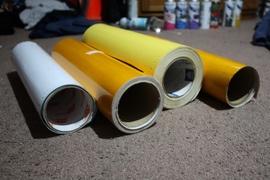 1 Vinyl: A synthetic plastic made from ethylene and chlorine. Vinyl has many applications in the construction industry and it is widely used in sidings, window frames, roofing and gutters, among others
1 Vinyl: A synthetic plastic made from ethylene and chlorine. Vinyl has many applications in the construction industry and it is widely used in sidings, window frames, roofing and gutters, among others
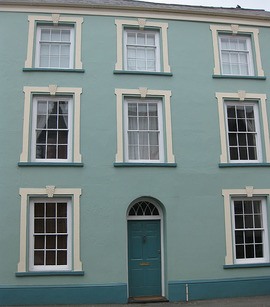 2 Sash window: A wall opening made of one or several movable panels (referred to as sashes) that serve as a frame for holding glass panes
2 Sash window: A wall opening made of one or several movable panels (referred to as sashes) that serve as a frame for holding glass panes
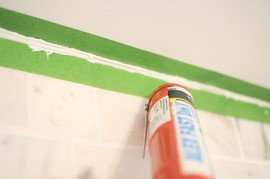 3 Caulk: A chemical sealant used to fill in and seal gaps where two materials join, for example, the tub and tile, to create a watertight and airtight seal. The term "caulking" is also used to refer to the process of applying this type of sealant
3 Caulk: A chemical sealant used to fill in and seal gaps where two materials join, for example, the tub and tile, to create a watertight and airtight seal. The term "caulking" is also used to refer to the process of applying this type of sealant
How much does it cost in my city?
Cost varies greatly by region (and even by zip code).
To get free estimates from local contractors, please indicate yours.